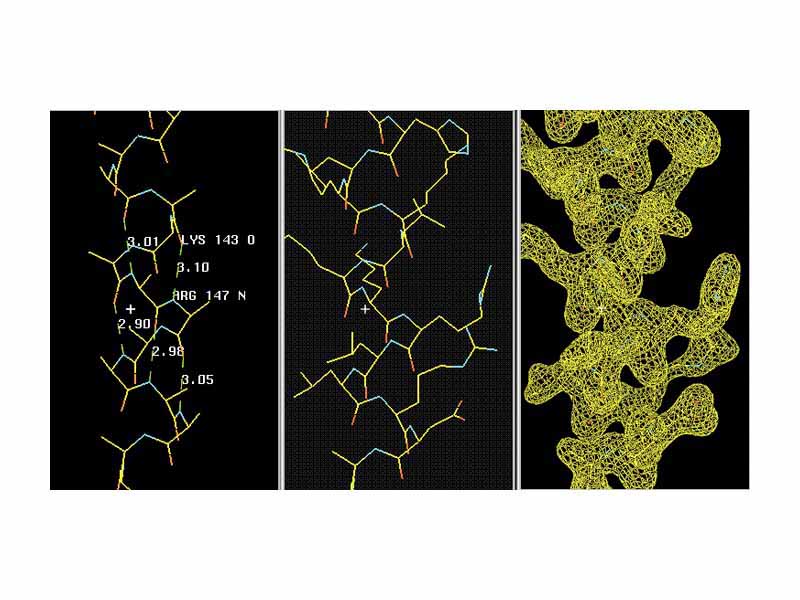The left panel shows the hydrogen bonding in an actual ?-helix backbone. Note that the nth residue O (Lys 153) bonds to the (n+4)th following residue's N (Arg 147). The actual values of some displayed H-bond distances give you some idea about the variations to expect within a helix. The center panel includes the side chains which were omitted in the left panel for clarity. You see the side chains pointing towards the N-terminal of the chain (lower residue numbers) and thus it is usually possible to determine the direction of the helix quite well during initial model building. A 0.2 nm electron density is shown in the right panel
Click this LINK to visit the original image and attribution information. Right click on the image to save the 800px teaching JPEG.

